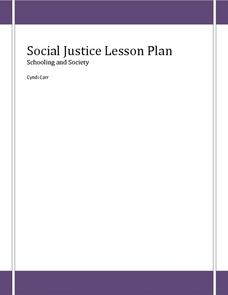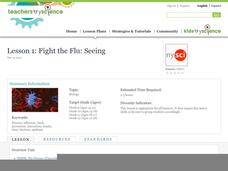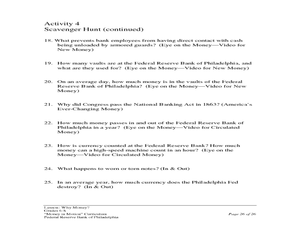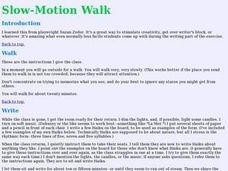EngageNY
Conducting a Simulation to Estimate the Probability of an Event II
Add some randomization into simulations. The 11th installment in a series of 25 presents two new methods to use in simulations--colored disks, and random numbers. Pupils use random numbers to run simulations where the probabilities make...
Consumer Action
Talking to Teens About Money
Your teenagers are probably very good at spending money, but how good are they at managing it? Teach class members about banking, checking accounts, interest rates, car insurance, and many other relevant concepts with a series of...
Bowland
Fashionista
So trendy! Show your class how to identify trends in sales patterns using mathematics. Scholars use a software simulation to collect data on age groups, price, and sales at a fashion store. This data allows individuals to determine the...
Curated OER
Let's Go Consumer Shopping
Second graders rotate through various centers designed to practice consumer math skills. They complete a task card at stations simulating consumer transactions that would take place at toy store, grocery store, restaurant or school store.
Curated OER
Simulation and Accounting Practices
Students implement their knowledge about accounting practices into a simulation activity. In this secondary consumer/business math lesson, students participate in a simulation centered on the life of the people during the...
Curated OER
Beyond the Checkbook: Choices of Payment Methods
Young scholars explore different payment methods. In this math lesson plan, students discuss the difference between writing a check and paying online. They will compare and contrast and present their data to the class.
Statistics Education Web
Consuming Cola
Caffeine affects your heart rate — or does it? Learners study experimental design while conducting their own experiment. They collect heart rate data after drinking a caffeinated beverage, create a box plot, and draw conclusions....
Curated OER
Shopping
Students demonstrate how to count money through a simulated shopping experience. In this consumer math lesson, students read the book Just Shopping With Mom and count play money to illustrate how much the items in the book cost.
PricewaterhouseCoopers
The Stock Market
Keep or sell? Young learners simulate as buyers in the stock market while learning about the benefits and important factors to know when purchasing. The thorough resource allows for observation of case studies and provides...
Curated OER
Buying a Car
Young scholars complete the PLATO ¿¿ Educational Software activity: Math Problem Solving: Car Costs to determine if he/she can afford to drive the car they are planning to buy.
Curated OER
Checks and Balances
Students examine how bank checks work and follow the "journey" of a written check. They discuss how transactional accounts work, identify and discuss the various parts of a check, and participate in a simulated business transaction...
Curated OER
Social Justice-Water in Developing Countries
Learners explore how water shortage affects everyday life. In this social justice lesson, students discuss information about water shortage in Ghana. A water shortage simulation/game is played in which a "Canadian" team starts with a...
Curated OER
Statistical Process Control
Young scholars brainstorm items they have that use memory and view Statistical Process Control PowerPoint presentation. They complete Statistical Process Control Simulation/experiment then find the average, range and standard deviation...
PBS
What Is Money?
Early learners participate in a bartering activity during which they make connections to money and consumer concepts. They simulate buying and selling situations with one another then visit an exhibit at the Federal Reserve Bank of...
Curated OER
Lesson 1: Fight the Flu: Seeing
The flu has been a deadly epidemic many times in the past. By examining technological innovations throughout history, then simulating the spread of disease from person to person through a classroom investigation, and finishing up with...
Curated OER
The Chain Gang
Students perform a food chain simulation to determine what happens when a food chain is broken.
Curated OER
Payment Parliament
Students investigate how the economy works by role playing in their class. In this money management lesson, students read parts from a script for use in a role playing lesson simulating the Federal Reserve and their payment...
Curated OER
Why Money?
Learners participate in a trading simulation to learn about barter and the benefits of using money. In this barter lesson, students participate in a trading simulation and learn about coincidence of wants. Learners then use money cards...
Curated OER
Pair 'Em Up!
Third graders verify the validity of Punnett squares. They simulate a real-world situation by drawing chromosomes from a paper bag and track the data.
Curated OER
Oceanography: Ocean Market
Sstudents identify consumer goods obtained from the oceans. They classify the items and calculate the cost of buying these goods. After taking a simulated sea shopping spree, they tally the cost of the items purchased. They conclude the...
Curated OER
Dressing in Early American Times
Fifth graders, by doing research and seeing actual and simulated artifacts, gain knowledge of and make comparisons about clothing in the Colonial and early Republican eras with attire of present time.
Curated OER
The Kindness Company
Students organize themselves into a simulated company complete with applications, interviews and training. They identify a community need they can fulfill related to cooking or sewing and work to make and deliver the designated product.
Curated OER
Read That Label!
Students explore reading nutritional labels and making good food choices through simulation. They prepare and design a label for a product. In addition, they create packaging and advertising to ensure access to the population.
Curated OER
Cookie Mining
Middle schoolers start with $19 of Cookie Mining Money with which they must buy his/her own "mining property" or cookie. After cookies are bought, students give their "mine" a name, record it, along with the price of their cookie on the...

























